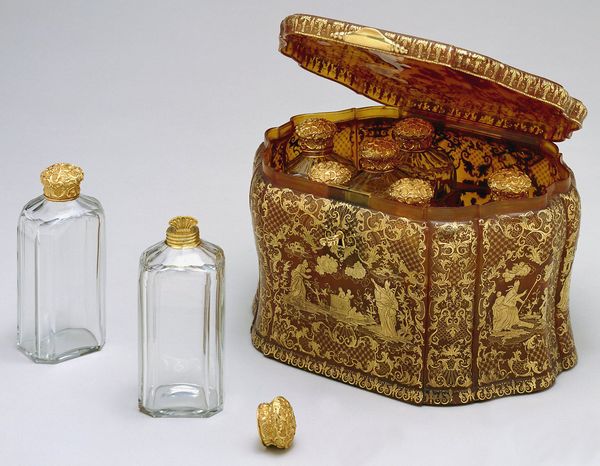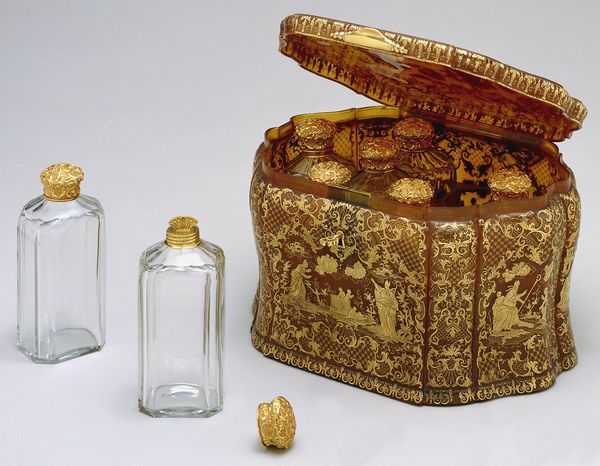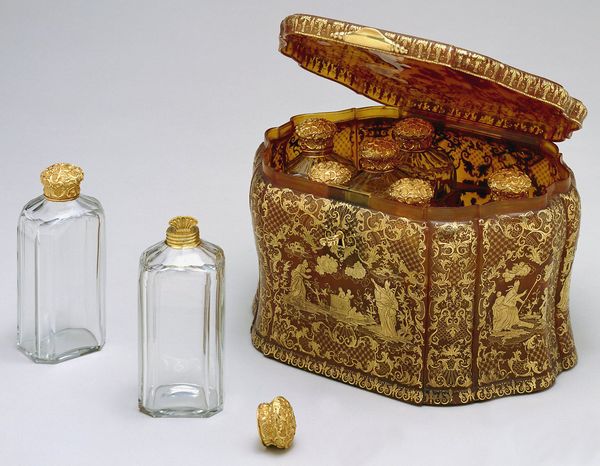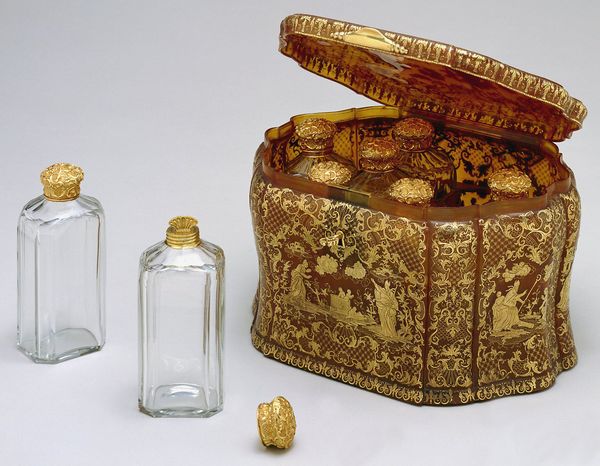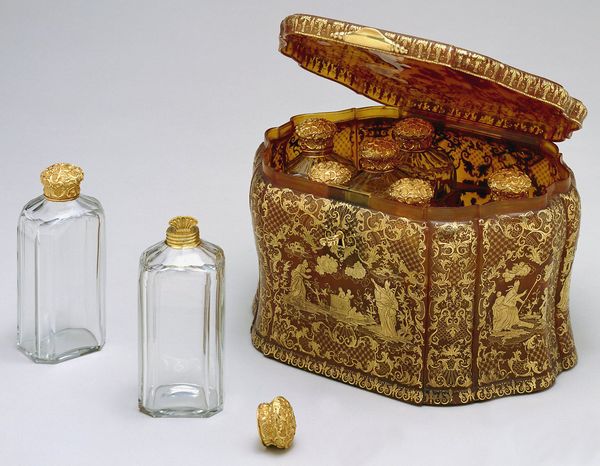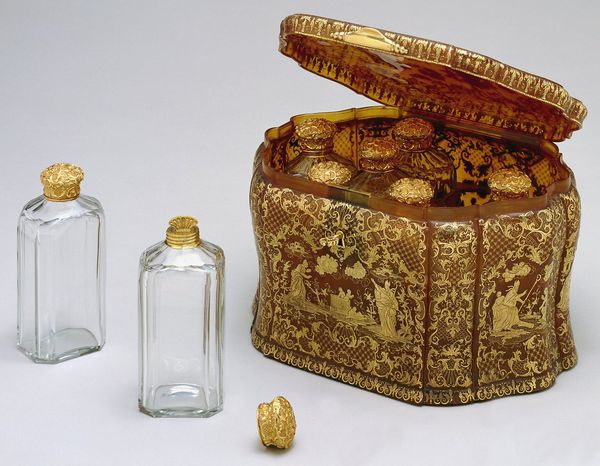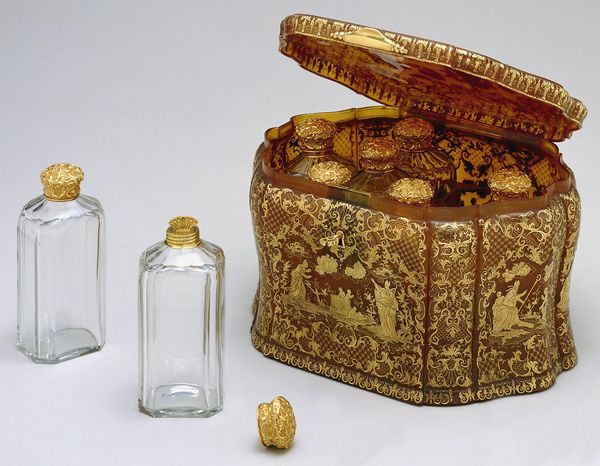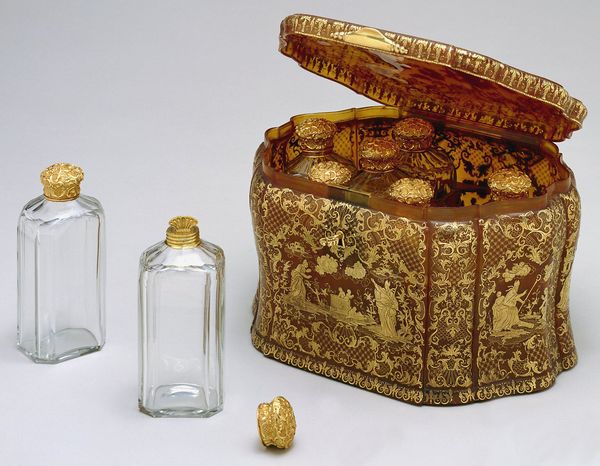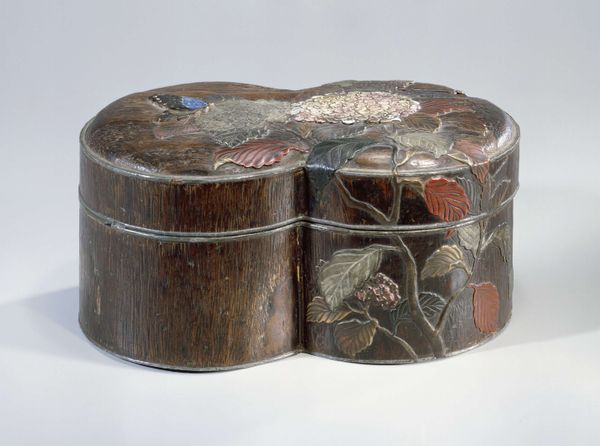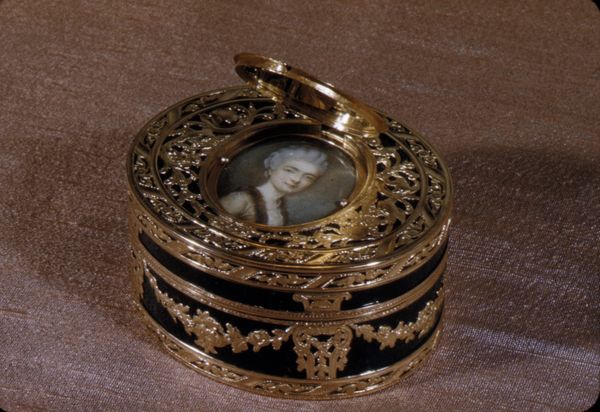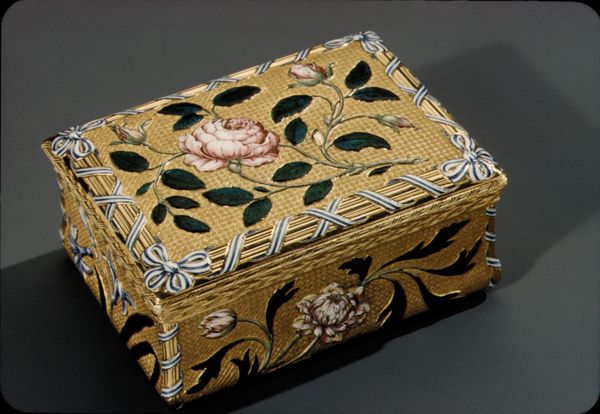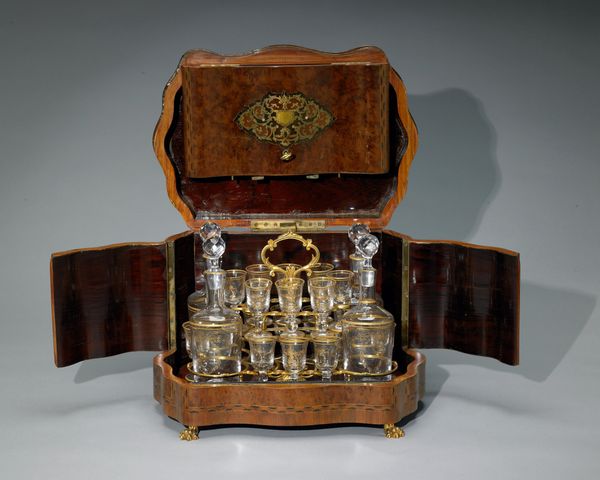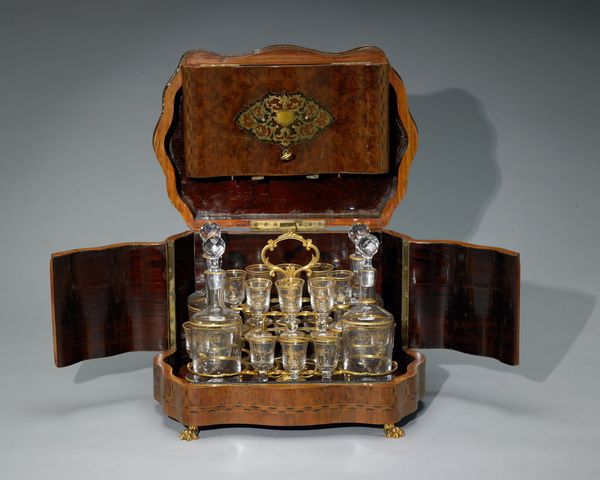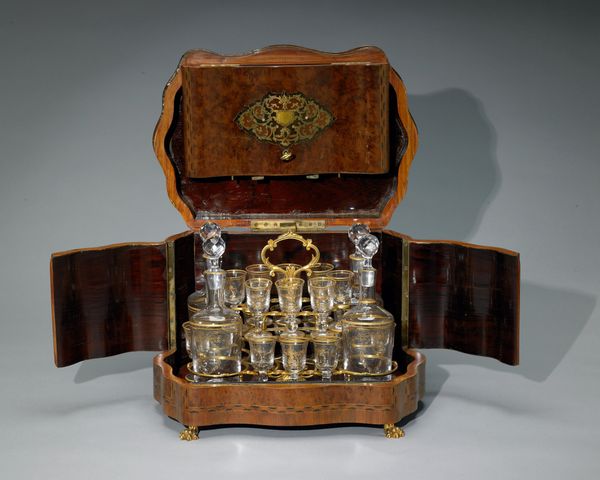
glass
#
baroque
#
glass
#
ceramic
#
decorative-art
Copyright: Public Domain
Curator: Here we have a glass bottle, created around 1745. You can find it here at the Minneapolis Institute of Art. Editor: Immediately, I'm struck by the opulent display. It speaks volumes about the owner's wealth and status. Is that gold inlay I see? Curator: Indeed. The bottle itself is crafted from glass, but what elevates it are the gold embellishments and the overall presentation. We are witnessing baroque style meeting decorative art, signifying that aesthetics are as significant as utility. The engraved details show scenes with multiple figures enacting some kind of drama... Perhaps scenes of conquests. Editor: It's interesting to think about these as cosmetic bottles displayed for private consumption and their connection to identity. What sort of narratives were privileged in their adornment, and who had access to this art form, and how were those stories perceived? Curator: Absolutely. Objects like these offer a window into the value systems of the elite in that period, reflecting an interest in presenting refined images of nobility and perhaps referencing classical tales for inspiration. Displaying knowledge through decoration, maybe? The very material, glass, already expensive at the time. It speaks volumes of a life distanced from the commoners. Editor: And further emphasizing the connection between beauty, wealth, and power. The stories this object tells are very specific in time. I am thinking about accessibility today and whether art can become more approachable across demographics. The fact this bottle is inside a museum now adds to its existing symbolic significance. Curator: Museums indeed shape how we perceive these objects. Considering how pieces like these are framed—both literally and figuratively—influences the dialogues around class, access, and cultural narrative we promote as institutions. Editor: I see that these luxury pieces remind us of past social strata, prompting thought about the stories we choose to preserve and exhibit today. Curator: It prompts reflections on history’s selective preservation and on how current exhibition designs shape what the public sees, affecting collective identity and narratives in the long run. Editor: Precisely, a delicate balancing act, striving to exhibit works from past eras responsibly, with transparency about their initial contexts. Curator: Exactly; making space for introspection is as valuable as marveling at artistic craftsmanship, especially for artifacts such as this one.
Comments
minneapolisinstituteofart over 1 year ago
⋮
The box is decorated with scenes from the life of St. Nicholas of Myra. This fourth century Greek bishop, who was the patron saint of children, sailors and travelers and the guardian of young women, was the forerunner of St. Nicholas or Father Christmas. The gold scenes were applied in a piqué technique whereby thin sheets of gold are impressed into tortoiseshell which has been softened in boiling water and olive oil. Once the shell cools, it contracts and the gold is securely held in place. This technique was first introduced at the end of the sixteenth century in Naples, and by the following century it had spread to France, England and northern Europe, with Paris and Naples as the principal centers. The costly and time-consuming nature of this intricate technique imply that it was used on only the most expensive small luxury items such as inkstands, trays, snuffboxes and boxes for toilet articles, in this case gold-mounted perfume bottles.
Join the conversation
Join millions of artists and users on Artera today and experience the ultimate creative platform.
